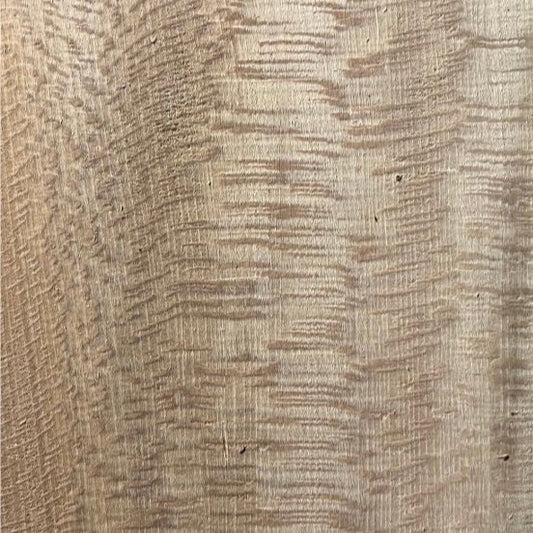Sycamore Lumber
-
Quartersawn Sycamore Hardwood Lumber Top Grade FAS - 25 bdft pack
Regular price $225.00 USDRegular priceUnit price / per
Collection: Sycamore Lumber
You can generate wide planks and boards from sycamore lumber for flooring, custom molding, and wooden kitchenware. Quartersawn sycamore has a decorative ray figure that is excellent for use as decorative wood panels.
Common Trade Name: Sycamore, American Sycamore, Plane Tree, buttonwood
Scientific Name: Platanus occidentalis
Color Range: Dark reddish-brown heartwood with predominant white to light tan sapwood. It has distinct ray flecks that give it a mottled appearance.
Availability: Available; may be sold as quarter-sawn boards, which are costlier than lumber
Janka Scale Hardness: 770 lbf (3,430 N)
Average Weight per BF: 34 lbs/Cu. Ft.
Common Uses: flooring, custom trim, custom molding, tonewood, pulpwood, pallets and crates, tool handles, wall planks, decorative objects, turning blanks
What Is Sycamore?
Sycamore wood is hard, tough, and split-resistant and comes from giant sycamore trees. The trees are often tall and big, but they can be hollow. Farmers back in the day fell the upper timber of the trees and used the bottom hollowed portion as shelter or stable. Then they will process the fallen lumber into coops, crates, butcher’s blocks, and many other wooden wares.
Sycamore tree wood has a reddish-brown color and a whitish-to-yellow or pink sapwood. It has a diffuse-porous end grain, indistinct and uniformly distributed, and a narrow band of wood tissues with wide spacing between the outlines and its growth rings.
Where Is Sycamore Sourced From?
Sycamore commonly grows in eastern United States hardwood forests. It has a natural range on the borders of Nebraska, Maine, to northern Florida. Sycamore trees that grow the largest are found in well-drained bottomlands, preferring open areas.
What to Look for When Buying Sycamore?
Sycamore lumber is sold in wider and thicker planks depending on the timber size. They are available in FAS or the more expensive quarter-sawn and rift-sawn pieces. Buy sycamore only when it has already seasoned since the wood is unstable when wet and becomes prone to warping. When thoroughly dried, sycamore is one of the most dimensionally stable lumbers with a hardness similar to maple.
When purchasing sycamore lumber, opt for planks with uniform color and figure for a more coherent wood project. It also helps keep sycamore lumber in a low-humidity area to prevent moisture reabsorption.
Pros and Cons of Sycamore
Before the advent of plastic wares, sycamore trees played a bigger role in the production of most household materials. They were pushed out of the limelight as time evolved but never really disappeared. Sycamore is still useful for many wooden pieces and fine furniture.
Pros
- Hard
- Tough
- Durable
- Beautiful appearance
- Crack and spilled-resistant
- Versatile
Cons
- Poor workability
- Prone to insect, rot, and decay
- Difficult to dry
FAQs
How hard is sycamore?
With a Janka scale hardness of 770 pounds-force, sycamore is considered a medium hard hardwood. It is also moderately strong in compressive and bending strength, making its wood flexible and resilient.
Is sycamore a good outdoor wood?
Despite being hard and strong, sycamore is not the lumber intended for outdoor uses. It has a low resistance to decay and insects because of its high moisture. Thus, they benefit interior architectural works like floors, wall panels, commercial shelving, and floating stair treads.
Where to Buy Sycamore
Sycamore is an abundant domestic wood that may be commonly available in many lumber stores. Its price varies depending on the figure on its surface, grade, and cut.
If you want to buy well-preserved hardwoods like sycamore, check trusted dealers like Alderfer Lumber Company Inc. Alderfer ensures valuable project creation by selling well-seasoned and kiln-dried sycamore lumber. We also have wide choices of specialty lumber that is sustainably sourced.
Please call us if you have questions about our wood grades, dimensions, and availability. Alderfer is more than happy to serve you by giving you the quality materials you need for your woodworking project. You may also email us to inquire about a specific wood that you need that may not be on our website. We can look it up in our physical inventory or order them for you if our supplies have already run out.

